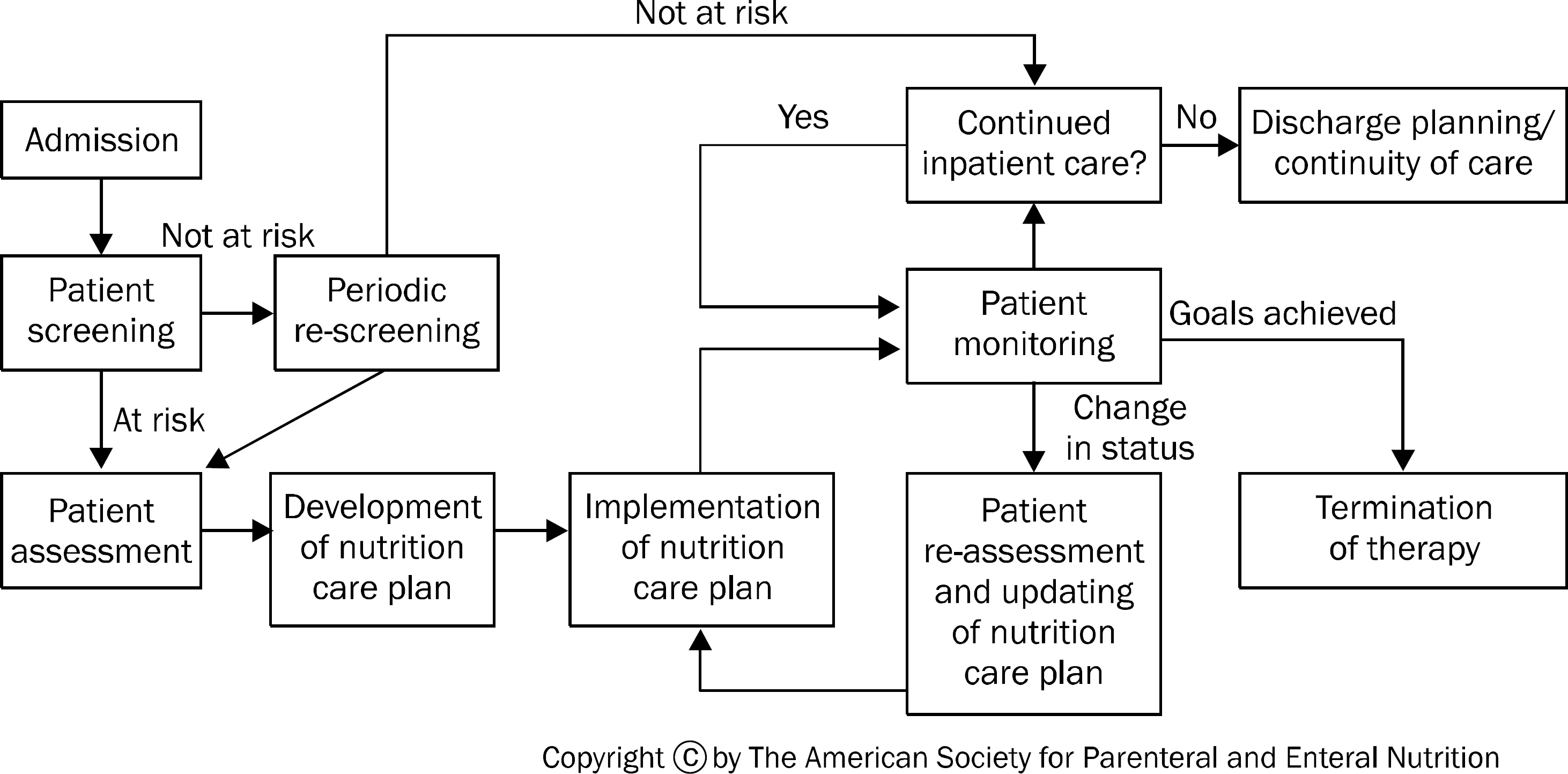Korean J Gastroenterol.
2015 Jun;65(6):333-335. 10.4166/kjg.2015.65.6.333.
Understanding Nutritional Support in Digestive Diseases
- Affiliations
-
- 1Division of Gastroenterology, Department of Internal Medicine, Samsung Medical Center, Sungkyunkwan University School of Medicine, Seoul, Korea.
- 2Division of Gastroenterology, Department of Internal Medicine, Pusan National University Hospital, Pusan National University School of Medicine, Busan, Korea. gasong@pusan.ac.kr
- KMID: 2373233
- DOI: http://doi.org/10.4166/kjg.2015.65.6.333
Abstract
- The prevalence of hospital malnutrition is still high in patients with digestive diseases, especially for those suffering from cancer and bowel diseases which cause malabsorption. It is well known that malnutrition is associated with delayed wound healing, impaired immunity, infection, increased complication, and poor convalenscence. Recently, nutrition screening and assessment by nutrition support team has become essential for nutrition management, and gastroenterologists comprise a dominant member of the nutrition support team. In critically ill patients and older people with chronic disease, nutritional support with enteral feeding and early feeding contributes to recovery and rehabilitation of patients. Securing enteral feeding routes, such as feeding tube insertion and placement of percutaneous endoscopic gastrostomy/jejunostomy, is an essential part of nutrition care that should be accomplished by gastroenterologists without much difficulty. It will also be necessary to recommend nutrition care as one of the clinical routines in gastrointestinal clinical practices. Therefore, education on nutrition care is strongly required as a part of gastroenterologist's training.
MeSH Terms
Figure
Reference
-
References
1. Norman K, Pichard C, Lochs H, Pirlich M. Prognostic impact of disease-related malnutrition. Clin Nutr. 2008; 27:5–15.
Article2. Mueller C, Compher C, Ellen DM. American Society for Parenteral and Enteral Nutrition (A.S.P.E.N.) Board of Directors. A.S.P.E.N. clinical guidelines: nutrition screening, assessment, and intervention in adults. JPEN J Parenter Enteral Nutr. 2011; 35:16–24.3. Chang DK. Hospital malnutrition. Intest Res. 2013; 11:238–242.
Article4. Kushner RF, Graham T, Hegazi R, Jensen G, Marik P, Merritt R. Optimizing integration of nutrition into patient care through physician leadership. JPEN J Parenter Enteral Nutr. 2010; 34(6 Suppl):30S–39S.
Article5. DeLegge M, Wooley JA, Guenter P, et al. A.S.P.E.N. Practice Management Task Force. The state of nutrition support teams and update on current models for providing nutrition support therapy to patients. Nutr Clin Pract. 2010; 25:76–84.6. American Association for the Study of Liver Diseases, American College of Gastroenterology, American Gastroenterological Association (AGA) Institute, American Society for Gastrointestinal Endoscopy. The gastroenterology core curriculum, third edition. Gastroenterology. 2007; 132:2012–2018.
- Full Text Links
- Actions
-
Cited
- CITED
-
- Close
- Share
- Similar articles
-
- Nutritional Support in Patients with Inflammatory Bowel Diseases
- Attitudes of Medical Staff and Factors Related to Nutritional Support for Patient Care in a University Hospital
- Enteral Nutritional Support in Gastrointestinal and Liver Diseases
- Nutritional Support
- Clinical Efficancy of 'Nucare' in Neurological Patients



